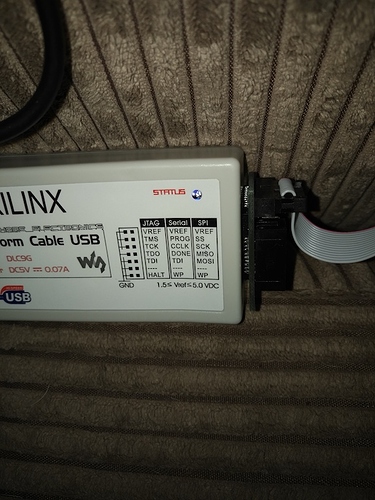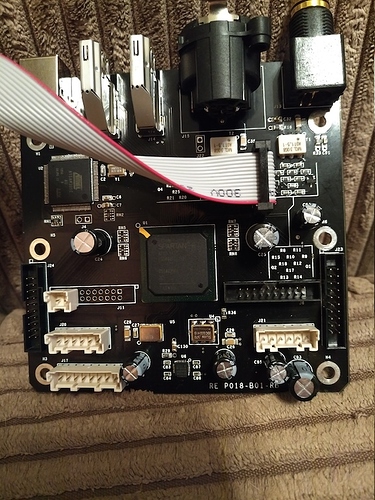Я это осваивал на своём источнике.
Ух ты! Нет, мой транспорт можно было с usb флешки перепрограммировать. Для ЦАП конечно нужна будет такая штука или целиком замена DCP.
Дмитрий, а можно мне как новичку поподробнее рассказать про организацию таких туров.
У меня просто сразу появляется несколько вопросов.
Кто проплачивает ЦАП для тура? Или производитель бесплатно его присылает, но тогда должен быть ответственный человек перед производителем, раз нет дилера.
Что делают с аппаратом после тура?
Кто несёт ответственность за сохранность внешнего вида, это всётаки 19кг. и 4000$?
Тур охватывает Москву или всю Россию?
Тема конечно интересная.
Вот тут немного
Экземпляры в тур дают производители, дистрибуторы или конечные владельцы.
Там насчет точности резисторов, я могу привести исчерпывающий комментарий. Кстати тотал дак использует достаточно стабильные и точные резисторы совершенно не такие )) Ну правда для завука и смд шки пойдут . Мало кто сможет отличить 16 от 20 и от 26 бит )) в реальности на слух. Гораздо важнее КАК звучит вообще. Кстати, будете хорошо себя вести, засвечу резистор секретный, его когда возят от производителя куда то, то там он акумом нагреваеться постоянно, термостатом, чтобы его сопротивление не уплыло. Ну в смысле просто при доставке )
Дмитрий! А прослушайте еще вот эти записи если есть возможность. После отслушивания хотелось бы услышать ваши впечатления, на счет того как он передает живую джазовую и симфоническую музыку.
Пруфы в студию!
http://www.denafrips.com/terminator.html
применены 2000 шт. резисторов
http://www.vishaypg.com/docs/63060/VSMP.pdf
точность - 0,005%
стоимость - 10 $ за ед.
Олег, почти всё перечисленное у меня есть. Прокофьев с разными оркестрами, орган в DSD, джаз занимает 60% библиотеки, всякие демо диски Dynaudio, концертные записи в хорошем качестве.
Глупость и кроме рекламы ничего. Даже если допустить, что все 24 разряда в формате 192/24 будут значащие и нести информацию, то откуда будет браться информация в этиз дополнительных 2-3 битах? Я уж не говорю про физические пределы линейности в связи с ограниченным пределом точности резисторов, которые там даже не применяются (резисторы с точностью 0,001% стоят более 300 долларов/штука).
Ясно. Ну ладно. У вас просто в тесте про это не сказано, какую музыку слушали и в какой записи. К тому же имеет смысл при тестировании если допустим в туре слушать одни и те же записи т.е. если конкретнее, то одного и того же качества.
Не уловил смысл сказанного. То есть производители Рокна, Терминатор увеличивают битность от нефиг делать, просто замануха? И в данном случае не имеет значения какие резисторы будут стоять 0,01 или 0,005?
Не имеет )
Если бы я ещё и это писал, то обзор был бы очень длинный. Я специально описывал терминами понятными для большинства читателей. С понмиманием описания конкретных треков были бы определённые сложности у читателей. Например, все знают как звучит 17 трек Ромео и Джульетта в исполнении оркестров Мариинского и Лондонского? А они по-разному записаны.
Сомневаюсь…
Собственно я это и имел ввиду. Не буду больше отвлекать 
Rob Watts (Chord Electronics) о субъективном восприятии увеличения эффективной битности:
So where does lack of resolution leave us? Well any signal that is below the noise floor of the noise shaper is completely lost - this is completely unlike PCM where an infinitely small signal is still encoded within the noise when using correct dithering. With DSD any signal below the noise shaper noise floor is lost for good. Now these small signals are essential for the cues that the brain uses to get the perception of sound stage depth - and depth perception is a major problem with audio - conventional high end audio is incapable of reproducing a sense of space in the same way one can perceive natural sounds. Now whilst optimising Hugo’s noise shaper I noticed two things - once the noise shaper performance hit 200 dB performance (that is THD and noise being -200 dB in the audio bandwidth as measured using digital domain simulation) then it no longer got smoother. So in terms of warmth and smoothness, 200 dB is good enough. But this categorically did not apply to the perception of depth, where making further improvements improved the perception of how deep instruments were (assuming they are actually recorded with depth like a organ in a cathedral or off stage effects in Mahler 2 for example. Given the size of the FPGA and the 4e pulse array 2048FS DAC, I got the best depth I could obtain.
_ _
But with Dave, no such restriction on FPGA size applied, and I had a 20e pulse array DAC which innately has more resolution and allows smaller time constants for the integrator (so better performance). So I optimised it again, and kept on increasing the performance of the noise shaper - and the perception of depth kept on improving. After 3 months of optimising and redesigning the noise shaper I got to 360 dB performance - an extraordinary level, completely way beyond the performance of ordinary noise shapers. But what was curious was how easy it was to hear a 330 dB noise shaper against a 360 dB one - but only in terms of depth perception. My intellectual puzzle is whether this level of small signal accuracy is really needed, or whether these numbers are acting as a proxy for something else going on, perhaps within the analogue parts of the DAC - I am not sure on this point, something I will be researching. But for sure I have got the optimal performance from the noise shaper employed in Dave, and every DAC I have ever listened too shows similar behaviour.
_ _
The point I am making over this is that DSD noise shapers for DSD 64 is only capable of 120 dB performance - and that is some 10 thousand times worse than Hugo - and a trillion times worse than Dave. And every time I hear DSD I always get the same problem o perception of depth - it sounds completely flat with no real sense of depth. Now regular 16 bit red book categorically does not suffer from this problem - an infinitely small signal will be perfectly encoded in a properly dithered system - it will just be buried within the noise.
_ _
Now the second issue is timing. Now I am not talking about timing in terms of femtosecond clocks and other such nonsense - it always amuses me to see NOS DAC companies talking about femtosecond accuracy clocks when their lack of proper filtering generates hundreds of uS of timing problems on transients due to sampling reconstruction errors. What I am talking about is how accurately transients are timed against the original analogue signal in that the timing of transients is non-linear. Sometimes the transient will be at one point in time, other times delayed or advanced depending upon where the transient occurs against the sample time. In the case of PCM we have the timing errors of transients due to the lack of tap length in the FIR reconstruction filter. The mathematics is very clear cut - we need extremely long tap lengths to almost perfectly reconstruct the original timing of transients - and from listening tests I can hear a correlation between tap length and sound quality. With Dave I can still hear 100,000 taps increasing to 164,000 taps albeit I can now start to hear the law of diminishing returns. But we know for sure that increasing the tap length will mean that it would make absolutely no difference if it was sampled at 22 uS or 22 fS (assuming its a perfectly bandwidth limited signal). So red book is again limited on timing by the DAC not inherently within the format.
Now the timing non linearity of uS is very audible and it affects the ability of the brain to perceive the starting and stopping of instruments. Indeed, the major surprise of Hugo was how well one can perceive that starting and stopping of notes - it was much better than I expected, and at the time I was perplexed where this ability was coming from. With Dave I managed to dig down into the problem, and some of the things I had done (for other reasons) had also improved the timing non-linearity. It turns out that the brain is much more sensitive that the order of 4 uS of timing errors (this number comes from the inter-aural delay resolution, its the accuracy the brain works to in measuring time from sounds hitting one ear against the other), and much smaller levels degrade the ability for the brain to perceive the starting and stopping of notes.
_ _
But timing accuracy has another important effect too - not only is it crucial to being able to perceive the starting and stopping of notes, its also used to perceive the timbre of an instrument - that is the initial transient is used by the brain to determine the timbre of an instrument and if timing of transients is non-linear, then we get compression in the perception of timbre. One of the surprising things I heard with Hugo was how easy it was to hear the starting and stopping of instruments, and how easy it was to perceive individual instruments timbre and sensation of power. And this made a profound improvement with musicality - I was enjoying music to a level I had never had before.
Напомню о шумовой полке комнаты прослушивания и о некоторых возможных ограничениях акустических систем.
Это, чтобы верно понимать, что такое 24 бита.
То есть, от какого звука ДО какого.

